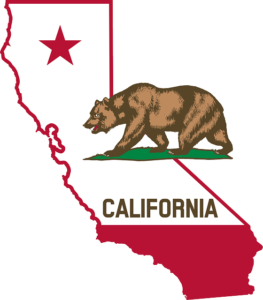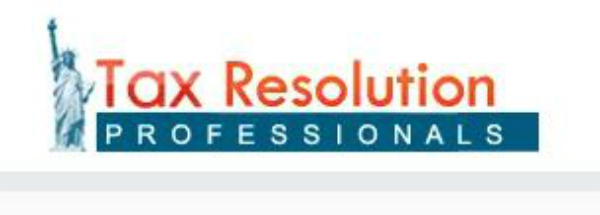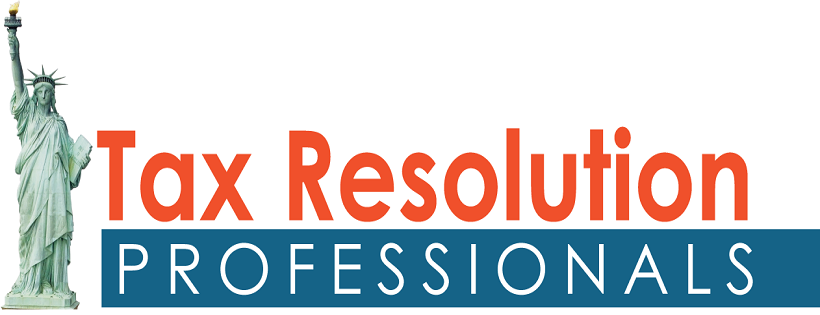Staying Compliant With California Self Employment Tax

Though employees may enjoy the benefit of tax withholdings from every paycheck, they still have to file during tax season. Depending on their deductions, they may owe money or receive a refund. The same set of rules applies to taxpayers who claim self-employment, but they must set aside their own withholdings and keep up with California estimated tax payments. Furthermore, self-employed taxpayers must follow a schedule of payments to remain compliant.
Because the California Self Employment tax creates more of a burden on the individual taxpayer, it’s vital to understand the process. Who does the State of California and the IRS consider self-employed? How often does the State of California expect payment? What are the forms and requirements for filing as a self-employed taxpayer in California?
These are just a few of the questions that need answers in order to stay compliant as a self-employed taxpayer living in California. Because the IRS requires self-employed citizens to file in a similar fashion, it’s best to deal with them together. Fill in any missing knowledge about Federal & California Self Employment Tax in the following passages.
California Self Employment Tax By The Franchise Tax Board
According to the State of California Franchise Tax Board, IRS self-employment tax consists of Medicare and social security, but the purpose of this article is to explain taxes for California, for self-employed people. The IRS self-employment tax applies to residents who are sole proprietors and earn $400 or more in profit during the tax year. Residents who are part of a partnership or limited liability company structured as a partnership also owe self-employment tax if they have a profit of $400 or higher.
Who Does The State of California Consider Self-Employed?

The State of California classifies self-employment in the same manner as the Internal Revenue Service. Businesses run by a sole proprietor or independent contractor are clear examples of self-employment. The tax law, however, specifically covers anyone living in California who runs a business and is not an employee of an organization. Examples include but are not limited to the following:
- Sole Proprietor or Independent Contractor
- Members of a Partnership
- Members of an LLC Company Structured as a Partnership
- Part-Time Business Owners
The intention of self-employment tax law is to collect from residents who work for themselves. By any stretch of the imagination, this covers an enormous amount of the workforce. It includes trades such as dental, medical, and vision. An attorney may decide to work for themselves instead of for a law firm. Truck drivers, artists, and gardeners may also qualify if they don’t work for someone else. The list goes on and on.
Taxable Business Structures At The State & Federal Level
Both the State of California Franchise Tax Board and the IRS recognize businesses by different designations. Though only some fall under the blanket of self-employment tax, knowing the accepted business structures helps paint a broader tax picture.
- Sole Proprietorship: The most common and simple way to start a business. Attributes of a Sole Proprietorship include:
- Only one person or married couple may own a Sole Proprietorship.
- Sole Proprietorships have a relatively low cost to start up.
- No taxable outside entity exists apart from the owner and the business.
- The life of a Sole Proprietorship exists along with the owner. When the owner dies, the Sole Proprietorship ends.
- Partnership: As the name suggests, a Partnership is a shared business venture by two or more persons.
- Corporation: A Corporation forms when a group of people decides to run a business as a separate entity. By law, the business is its own person and owes taxes as a living individual.
- S Corporation: An S Corporation is a business entity that chooses to be taxed under Subchapter S of Federal law. This may include a Partnership, LLC, or Corporation. Forming an S Corporation is a means of providing liability protection to shareholders.
- Limited Liability Corporation (LLC): An LLC is a business structure that features aspects of both a Corporation and a Partnership. They may benefit by offering limited liability to shareholders, just like an S Corporation. Like a Partnership, however, owners may participate in the management of the business. The State of California treats LLCs as a Partnership unless the LLC elects to be taxed as a Corporation.
Main Details Of Calfornia Self-Employment Tax
Discover Whether Or Not You Owe California Self-Employment Tax
The first step for any business owner or individual that works for themselves is to find out if they owe California Self Employment Tax. Remember that as per California State definition, you don’t owe if your net earnings are less than $400. It’s also important to recognize that self-employment tax only includes Social Security and Medicare. Businesses may have to file separate forms depending on their designation. This is an excellent time to check your status with the IRS as they follow the same standard.
If your work falls under the classification of self-employment, add up your income and subtract your expenses. You owe self-employment tax if you have a profit of $400 or more. If your calculations come out showing a loss, you may be able to deduct it from your overall gross income. Use Schedule C or C-EZ to calculate self-employment tax.
Estimating Quarterly California Self-Employment Tax Payments

Like that part of the workforce who collect checks from an employer, those who are self-employed must pay their taxes throughout the year. Unlike employed individuals whose taxes come out of each paycheck, the self-employed usually pay on a quarterly basis. This being the case, it becomes paramount to know how much to withhold in order to pay the quarterly tax.
Residents who are self-employed often experience higher volatility in income than those who collect a steady paycheck. They may have certain seasons that are busier than the rest. For this reason, taxpayers make an estimate of their annual income. This is an educated guess scenario, and taxpayers may owe or pay too much by the end of the year. The California FTB and the IRS expect taxpayers to make a quarterly payment if they estimate owing more than $500.
Quarterly Self-Employment Tax Schedule
Once self-employed resident estimates their annual taxes, they will want to check the quarterly payment schedule. It provides both the dates and percentages of the annual tax due. The California FTB and IRS follow the same schedule.
- First Quarter: Due April 18th.
- Second Quarter: Due June 15th.
- Third Quarter: Due September 15th.
- Fourth Quarter: Due January 15th of the following year.
Self-employed residents may pay 25% of their annual tax estimate each quarter. That being said, taxpayers may discover that their income changes throughout the year and can make adjustments. Inspect IRS Publication 505 for full details on tax withholding and estimated taxes.
How To File For IRS & California Self Employment Tax
Whether taxpayers owe less than the $500 threshold or withhold and pay quarterly, they must file their annual taxes. Like everyone else, these taxes are due before the April deadline. Use Form 1040-ES to file with the IRS and 540-ES to file with the California Franchise Tax Board. Self-employed taxpayers use Schedule C to report income.
California & Federal Self-Employment Tax Payment Options
Residents of California who are ready to send in their payments have a few options. To pay your California Self Employment Tax, visit the FTB website. Use the link to the free Calfile portal or print out the forms and mail them in. The IRS offers several ways to pay your taxes. View all methods on their payments page.
Current California Self-Employment Tax Rates
The current self-employment tax rate is 15.3%. Of that percentage, 12.4% goes to Social Security and is collectible up to $118,500 of net earnings. The remaining 2.9% goes to Medicare without any collectible earnings limit.
Self-Employment Tax And The IRS
Benefitting From Acceptable Deductions
Individuals who file and pay self-employment tax can deduct the employer portion from their adjusted gross income. The deduction is for income tax purposes only. In addition, taxpayers using Form 1040 Schedule C may be able to claim the Earned Income Tax Credit.
Penalties For Late Filing & Non-Payment

It is never an ideal situation to fall behind on tax payments. In the unfortunate event that it does happen, the penalties can stack up. Penalties can also begin for self-employed taxpayers who fail to make their quarterly payments. Worse case situations can end up with the issuance of a tax lien.
Penalties begin at 5% of the total tax due on a specific date. For each month or partial month thereafter, the IRS charges an additional .5%. The maximum penalty can rise to 25%, though the IRS cannot charge for over 40 months. Interest also accrues daily on all past due accounts.
Abatements To Applicable Penalties
In cases of financial hardship, both the IRS and FTB may offer penalty abatement. This allows for a reduction or cancellation of imposed penalties. Taxpayers with a positive historical standing may qualify for the First Time Penalty Abatement Program. Stipulations that call for penalty abatement include the following:
- Extreme financial hardship due to disability or catastrophe.
- Incorrect refund.
- Delay or incorrect assessment by the IRS or FTB.
- Loss due to a natural disaster.
- Military serving abroad.
Final Words About Federal & California Self Employment Tax
Self-employment in California can be incredibly rewarding. In order to protect the investment of both time and money, it is vital to know your tax expectations. Business owners that stay on top of their taxes avoid the extra charges in penalties. Being self-employed includes the burden of withholding and paying quarterly taxes, and hardships are often unavoidable. Don’t hesitate to use our Tax Help Guide. You may also Contact Us or call us at (888) 515-4829 if you feel over your head or have any further questions. Please note that this guide is not legal advice, consult a licensed tax attorney if you need tax advice.



벼룩시장 구인구직 및 신문 그대로 보기 (PC/모바일) | 구인구직 앱 어플 무료 설치 다운로드 | 모바일 벼룩시장 보는 방법 | 벼룩시장 부동산 | 지역별 벼룩시장 | 벼룩시장 종이신문 에 대해 알아보겠습니다. 섹스카지노사이트
https://www.youtube.com/@starissu
https://film35.tistory.com/438
https://www.youtube.com/channel/UCyxM_MlJsJQaQSuJ8lR58tg
https://kr.new-version.app/download/honeycam/
여행지
https://mintfin.tistory.com/entry/EC9588EC82B0EAB590ECB0A8EBA19C-EAB5ACEC9DB8EAB5ACECA781?category=303909
https://www.youtube.com/@namoktv
https://www.youtube.com/@starissu
https://acase.co.kr/92
수원출장샵
https://www.youtube.com/channel/UCyxM_MlJsJQaQSuJ8lR58tg
https://www.youtube.com/@namoktv
https://www.youtube.com/@namoktv
https://www.youtube.com/channel/UCJLXoLNzHeK70WCJlQNYf-g
https://honeytiplabs.com/컴퓨터-모니터-깜빡임-동영상-재생-화면-오류-해결방/
https://www.youtube.com/@namoktv
https://www.youtube.com/channel/UCJLXoLNzHeK70WCJlQNYf-g
https://www.youtube.com/@starissu
https://itgunza.com/3457
https://microsoft-powerpoint-2010.softonic.kr/download
https://itgunza.com/3457
https://new-software.download/windows/roblox-studio/
https://edithvolo.com/삼성-에어컨-에러코드/
https://www.youtube.com/@trot-workshop
https://www.youtube.com/@소중한인연-c1u
대전세븐나이트
https://itgunza.com/3457
https://itgunza.com/3457
https://nicesongtoyou.com/라이프/장애등급-혜택-총정리-및-주요-내용-안내/
하동동해출장만남 소자본 창업
https://itlearn.kr/파워포인트-무료설치-다운로드-방법/
https://www.youtube.com/@가요여행
https://www.youtube.com/@가요여행
https://www.youtube.com/@가요여행
https://nicesongtoyou.com/tax/corporate-tax/
https://www.youtube.com/@GILMONG201
https://www.youtube.com/channel/UCeVNIN2PoYFRDmFyYRmK7bQ
https://edithvolo.com/page/113/
https://www.youtube.com/channel/UCe0Qrv4HvRK_iup3X_cNdBA
I don’t think the title of your article matches the content lol. Just kidding, mainly because I had some doubts after reading the article.
https://www.youtube.com/@소중한인연-c1u
https://www.youtube.com/@소중한인연-c1u
If some one needs expert view concerning blogging then i recommend him/her to pay a quick visit this weblog, Keep up the good job.
https://www.youtube.com/@가요여행
https://www.youtube.com/channel/UCeVNIN2PoYFRDmFyYRmK7bQ
https://www.youtube.com/channel/UCyt2dGrKTf9KpBk1jdUl3oA
https://www.youtube.com/@소중한인연-c1u
I was recommended this blog by my cousin.
I am not sure whether this post is written by him as nobody else know such detailed about my problem.
You are incredible! Thanks!
Take a look at my blog: nordvpn coupons inspiresensation
nordvpn coupons 350fairfax
An interesting discussion is worth comment. There’s no doubt
that that you should publish more on this topic,
it might not be a taboo subject but usually people don’t discuss these
subjects. To the next! Kind regards!!
Your point of view caught my eye and was very interesting. Thanks. I have a question for you.
https://nicesongtoyou.com/welfare/middle-aged/
https://www.youtube.com/channel/UCyxM_MlJsJQaQSuJ8lR58tg
It’s an awesome paragraph in favor of all the internet viewers; they will get benefit from it I am sure.
My homepage – eharmony special coupon code 2025